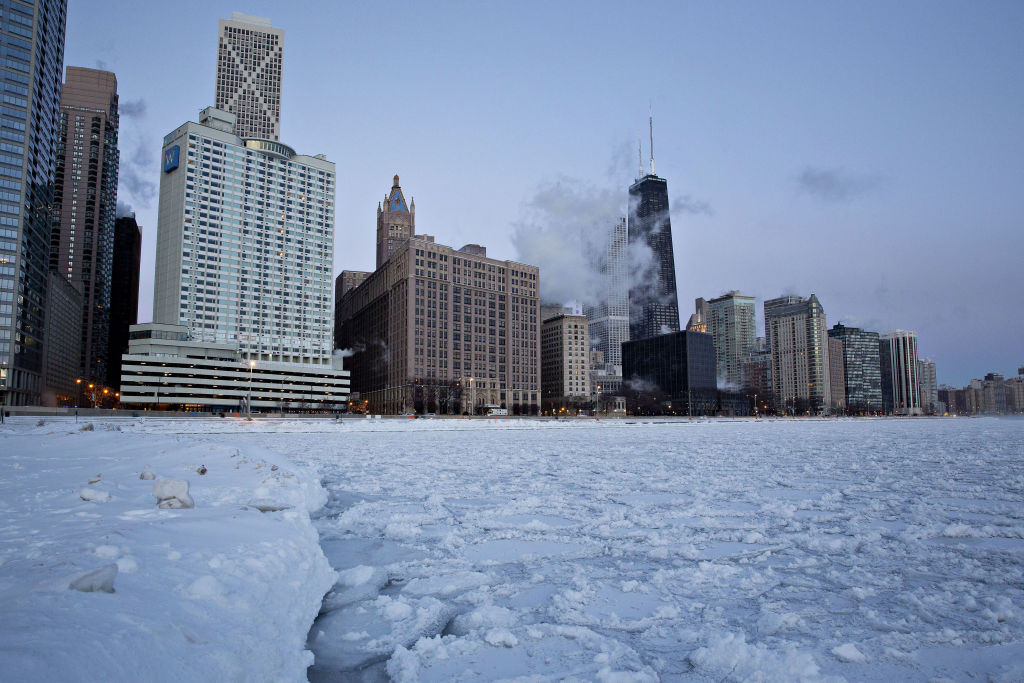It is extremely cold in the Midwestern United States, where forecasters are warning of "life-threatening extreme cold." During the early Wednesday morning hours, much of the Dakotas, Minnesota, Wisconsin, and Illinois are locked down with these "feels like" temperatures in the -40s, -50s, and even -60s (Fahrenheit) as winds howl out of the west at up to 25mph.
The region's largest city, Chicago, likely will set a record Wednesday for the coldest day in the city's history. Sunrise temperatures in the city were -23°F, and high temperatures today were forecast to only reach -14°. The city's coldest day on record occurred on January 18, 1994, when the high only reached -11°. The city is even setting its railroad tracks on fire so that trains can run on them. The battle against the cold is much the same across the upper Midwest.
The culprit behind this Arctic outbreak is the much-discussed "polar vortex," which is not a storm, per se, but a feature in the atmosphere. Normally, this is a roughly circular current near the North Pole, an atmospheric river of sorts, that keeps cold air bottled over the Arctic. Every so often, something disrupts or dislodges the vortex, allowing a chunk of this colder air mass to move southward into the mid-latitudes. Presently, an especially cold and large chunk of this air mass has spilled into Canada and the United States.
Predictably, this has led some prominent climate skeptics to cry foul about climate science, confusing local weather conditions with the broader climate.
It is worth noting that just before the Arctic outbreak in the central United States, Australia experienced a severe heatwave in the midst of summer Down Under. The country's Bureau of Meteorology reported that overnight temperatures in the region of Noona, in New South Wales, only briefly dropped below 100°F and that Canberra and other locations were setting all-time records for heat.
The science of climate change generally predicts more extreme weather in coming years, as the planet warms, the atmosphere becomes more moist, and the climate a bit more unstable, causing features such as the polar vortex to break down.
In any case, it's helpful to have some perspective. High temperatures in Chicago are forecast to rebound into the mid-50s by Monday, with lows perhaps only falling to around 50 degrees. Should that forecast verify, a low of 50 degrees on the morning of Monday, February 4, would shatter the record for "record high minimum" temperature for that day, which is presently 37°.


